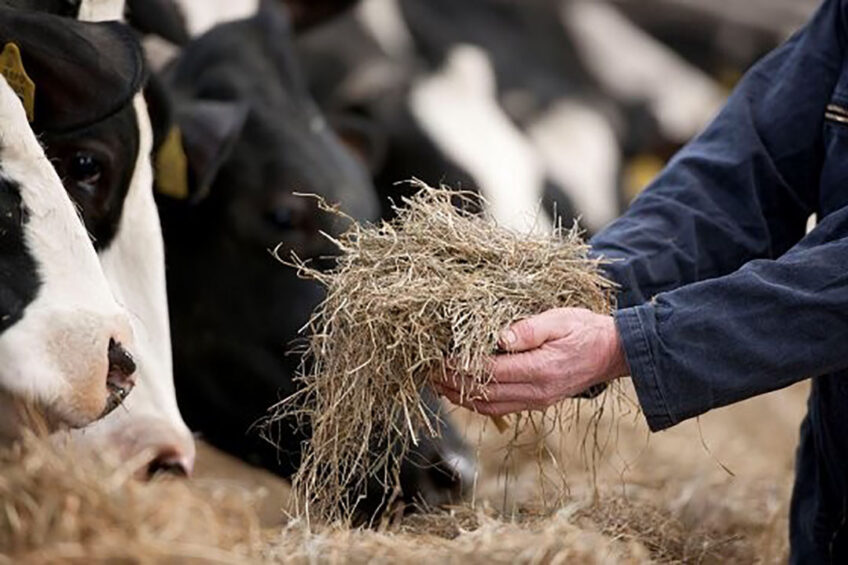The future of dairy nutrition and emerging innovations

Approaching the end of an extraordinary year gives the opportunity to reflect on the current status quo of the dairy industry, future market projections and allows for exciting speculation on emerging dairy nutrition innovations.
What understanding have we made today that will impact our future? A great starting point is to think about the key drivers. In recent years those drivers have included consumer influence at the top of the list. Consumer influence is, of course, not a new concept, however with the advent of consumer focus on sustainability, a new vector of change has been laid upon the dairy industry.

Scientific understanding and advancement has also previously driven the dairy industry forward with applications taking advantage of new knowledge. Yet as we face the start of a new decade, it feels as though a new chapter is dawning. A chapter in which nutrition goes beyond growth and performance and impacts the bigger picture, including efficiency, health and the environment.
 Consumers driving change
Consumers driving change
The sustainability movement in societies across the globe has brought a greater focus on food production. Soil health, burping cows and fertiliser usage are now common topics for documentary films. This renewed consumer interest has accelerated the rate of change of mindset, policy and adoption of sustainable agriculture.
Protein has hit the headlines with greater focus than before. The Netherlands is leading the way on becoming experts in utilisation of homegrown protein sources. Already this past year we have seen the media about nutritional solutions to reduce methane and commercial applications will follow in the next few years.
As we go into the next 10 years of dairy production, other changes will be driven from consumer pressure.”
Sustainability is an ever-challenging concept to qualify in agriculture. Earlier this year, sustainable palm oil expert Judith Murdoch commented that “Simply omitting palm oil from products is a misguided approach to addressing a much larger problem. To truly be sustainable, we must look at the big picture and analyse how policies and practices are going to impact the environment and communities involved.”
The sustainable option for palm offers support to smallholder communities in Indonesia and Malaysia where the majority of palm is grown. Sustainably-sourced palm oil ensures best practice and education leading to no deforestation, no development on peat and no exploitation of people and local communities (NDPE).
 Dairy cows: Top 5 sustainable approaches to protein nutrition
Dairy cows: Top 5 sustainable approaches to protein nutrition
The symbiotic relationship between the dairy cow and the rumen microbial population is the cornerstone of ruminant nutrition.
Consumer focus has led to a need for accountability and change when it comes to ingredient sourcing. Far from being a negative pressure, this focus has been the catalyst for positive changes working towards the much bigger picture of sustainable agriculture. As we go into the next 10 years of dairy production other changes will be driven from consumer pressure. The industry will make adaptations while hand-in-hand improving efficiency and profitability.
‘Feeding the immunology’ is becoming a concept that could have a great impact on animal production in the future.”
 Science driving change
Science driving change
Usually the science makes a move and the industry follows. The science of nutrition is no longer about feeding only for growth and aiming for a return on feed cost. Since then it has moved to understand that nutritional requirements of an animal extend beyond maintenance and performance. Animals rely upon nutrition to support other biological systems, for example the immune system.
‘Feeding the immunology’ is becoming a concept that could have a great impact on animal production in the future. The obvious benefit is the potential reduction of antibiotics but as well as that, nutrition that considers the immunological response could also bring a more precise rationing – leading to efficiency improvements. Uncovering the overlaps between nutrition and immunology will give rise to interesting applications of the future.
 5 ways nutritionists can reduce methane in dairy cows
5 ways nutritionists can reduce methane in dairy cows
Methane (CH4) and belching cows have been a media hot topic for some time now and the body of science around CH4 continues to grow.
The rumen microbiome is the cornerstone of nutrition and current science has only scratched the surface of the complexity. In addition to the bugs inside of the cow, a focus of the future could be the microbes in the environment and their interaction with the dairy herd. We are already seeing some interesting applications around this area, generally in the development of combination probiotics for the environment. Bugs influencing the bugs could be a key to better animal health and welfare.
Will future nutritionists be formulating for dynamic requirements, that go beyond the parameters of today? With an increasing availability of microbial omics techniques, where will our understanding of the rumen be in 20 years? New applications of nutrition will play to the strengths of new scientific understanding, capturing the importance of nutrition beyond animal growth. These applications will be built on the concept of working with the rumen microbes, getting the best out of that fascinating biological enigma.
All in all, the next decade looks to be an interesting one in this world of accelerating technology. There is a need for dairy technical knowledge and application to move with the tide and follow an accelerated path. There are some great future challenges, but with them will come some great improvements and I look forward to 2030 when we can reflect on the evolution of nutritional innovations in dairy production.
Join 13,000+ subscribers
Subscribe to our newsletter to stay updated about all the need-to-know content in the dairy sector, two times a week.










